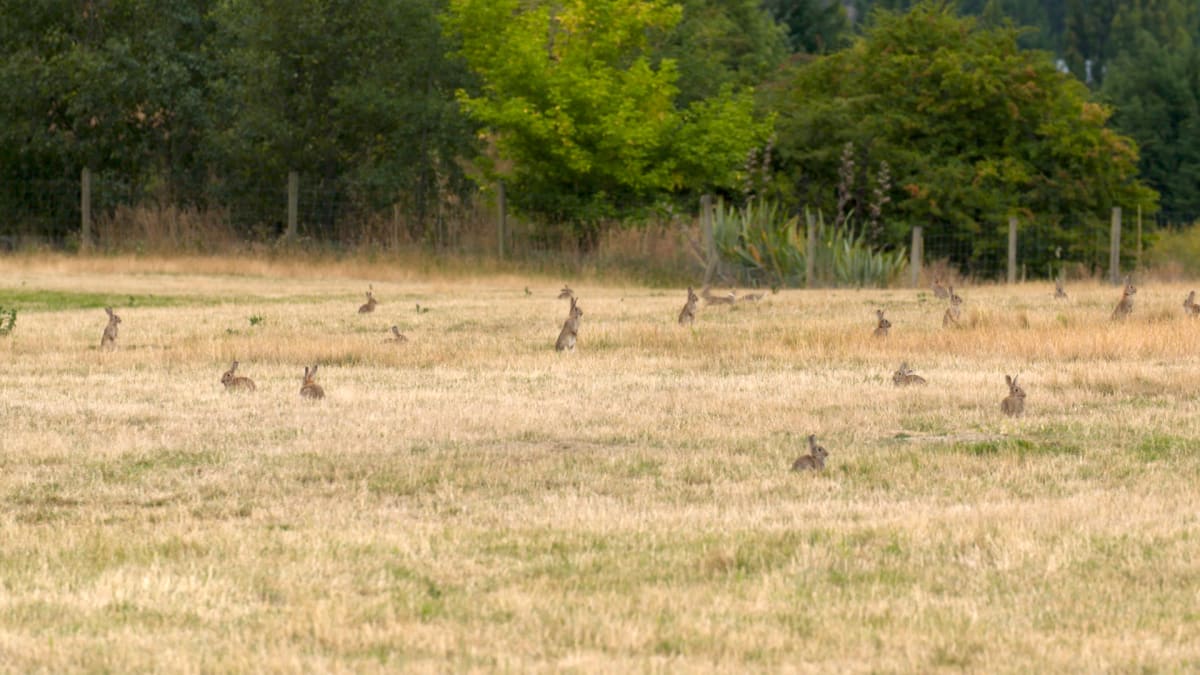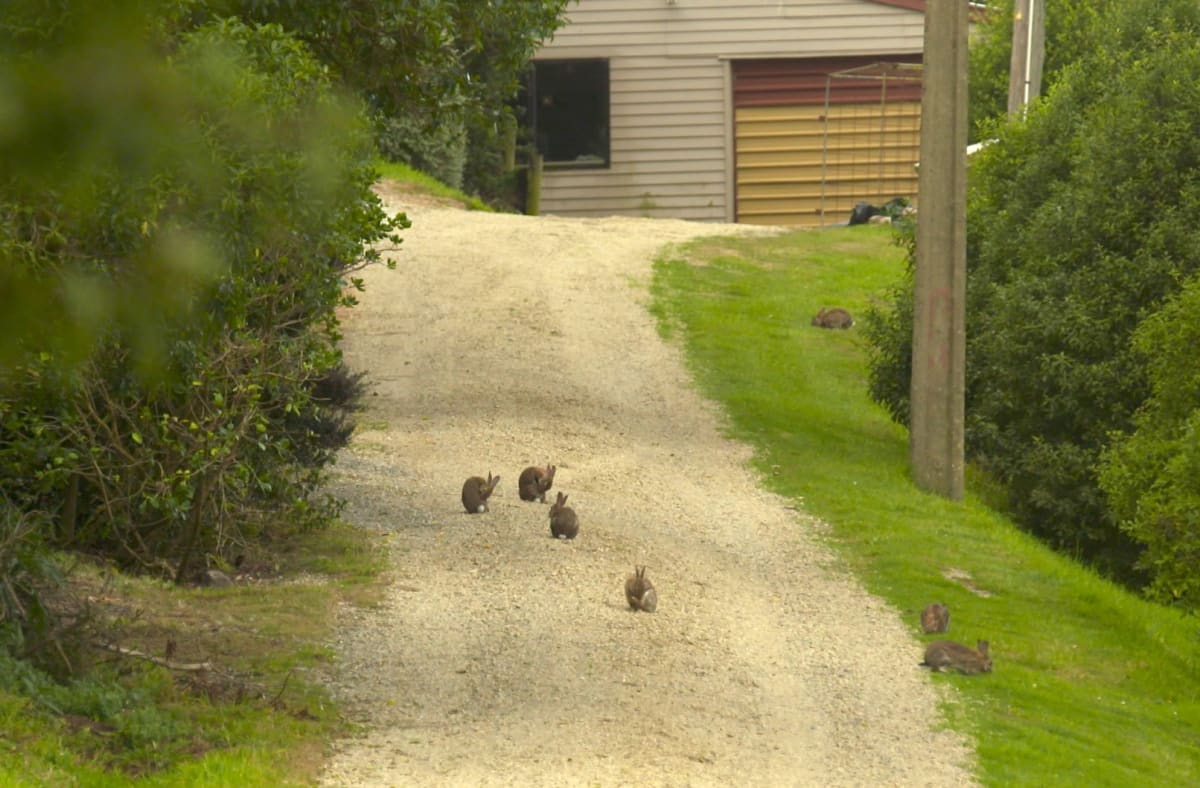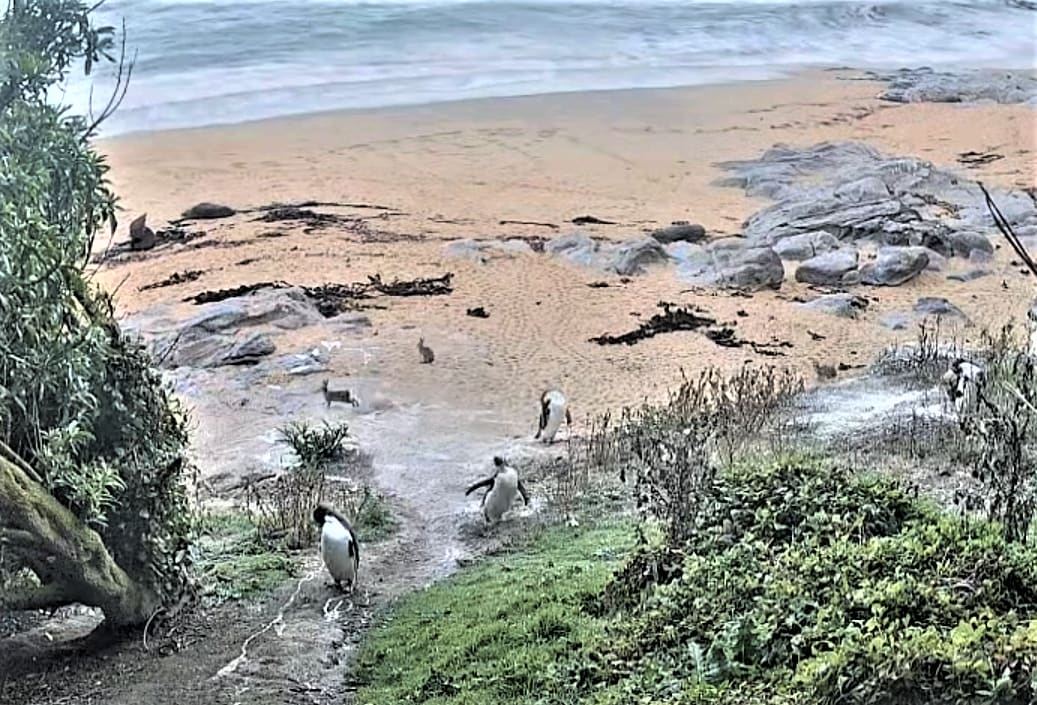
When the rabbits spill off Otago's land and on to its sea lion, seal and penguin-populated beaches, you know there's a serious pest-control problem
For the first time in years – so many no one wants to put a number on it – non-compliance notices have been served on Otago landowners for letting rabbits run amok on their land.
A further 40 notices ordering immediate action or costly consequences are set to follow, as a shake-up in the pest department at the Otago Regional Council (ORC) last year starts to bear fruit.
Environmental implementation manager Andrea Howard, who has been in the role less than two years, concedes the ORC has had a “less than active stance” on the rabbit front and that this would have contributed to current numbers.
“We were not as assertive as we needed to be in the past, but that has changed. We’ve stood up and there’s a huge amount of activity that wasn’t there 12 months ago.”
She is pushing a new approach, gathering recalcitrant or struggling landowners together, educating them if need be and giving all a chance to either make good or suffer the consequences.
Those consequences involve paying an often-hefty bill for enforced pest-control work organised by the council.
Biosecurity revamp
Howard puts the recent rallying against Otago’s most destructive and costly pest down to a revamped biosecurity department, new direction through a pest plan completed in late 2019 and additional ratepayer funding.
During the past year, she has brought together hundreds of Otago landowners to gang up against rabbits in their neighbourhood. It’s a “whole of system” approach that involves changing the behaviour of people who occupy the land, no matter who they are. Under the scheme, government departments might be brought into groups with lifestylers, farmers with forestry owners and councils with cribbies.
Every year rabbits cost New Zealand more than $50 million in lost production, plus a further $25 million in direct pest control, according to the Ministry of Primary Industries. Pest controllers and landowners have told Newsroom that numbers in Otago today are as bad as ever and considerable environmental damage continues.
Rabbits can be seen on beaches mingling with penguins and sea lions in badly hit Moeraki, and lifestyle subdivisions, farms and reserve land are being trashed by big populations.
Taking the sun
Pest controller Stephen Dickson works all over the province and reckons rabbit numbers, and the land damage wrought by the exotic mammals, is as bad as ever, although change may be in the wind.

“I drove past Wanaka Airport a few weeks back and in one paddock there must have been 50 rabbits sunning themselves in the middle of the afternoon. The ‘why’ generally comes down to money.”
He says action has been lacking from government departments that oversee large chunks of rabbit-infested land.
“Who knows how long they have to shuffle paperwork and procrastinate before we will see serious action from them.”
He has noticed, however, that the ORC has started contacting landowners who have neglected control work.
Results will take time, Howard says, but she is cautiously optimistic that the ORC is “onto something” in terms of longer-term, sustainable success.
By promoting collective action against rabbits, alongside an invigorated enforcement programme, she has drawn a bead not only on the pest itself but also on those not taking responsibility for keeping populations down.
Little non-compliance action against negligent landowners has been undertaken in the recent past — none in the last two years — that she was aware of. That is about to change, however, with the first enforcement notices issued this month in South Otago.
“We have about 40 more properties immediately that fall into that category and up to about 300 eligible for ‘notices of direction’. We’re looking for action … they are showing as non-compliant but between 50 percent and 70 percent of those are developing plans. People are actually doing something as a result of us reminding them.”
In the ORC’s sights
Central and South Otago were first in the non-compliance action work stream but the council is targeting properties across the whole province.
“At this stage, it is predominantly farms and larger lifestyle blocks. As time progresses, non-compliance is likely in rural properties, lifestyle blocks, larger urban properties and on public land.”
Costs incurred varied wildly between properties, starting at about $500, but possibly involving tens of thousands of dollars work.
Lack of council action against negligent property owners has been frustrating other landowners throughout Otago, as Newsroom documented in a series last year. The environmental and economic damage being sustained on lifestyle blocks, farms, vineyards, golf courses, cemeteries, unoccupied government-controlled land and even within modern housing subdivisions came as a shock to many. Rabbits invading en masse from neighbours who were not doing any control work was a common theme.

Howard is on a mission to turn around that perception of council inaction, but it may be like turning a big ship with a small steering wheel for a while yet.
One frustration is that council processes can take years with no rabbits actually being killed along the way.
“That’s a valid concern,” Howard says. “Otago is a big place and its geography lends itself well to rabbits. There’s only so much me and my team can do in terms of one year’s work. A hundred years ago, exactly the same issues were raised and it’s incredibly frustrating for people. I think we are on to something [now] that has the best chance of succeeding.”
In some heavily infested areas, poisoning might have done the job, but repeated such efforts have not had the desired long-term effect.
“People think you drop poison, all the rabbits die and you walk away. But that only kills a certain number. The rest go on and breed and the problem continues.”
It may be three to five years before progress becomes evident, Howard says, but she believes it will be far greater than if one-off poison drops are relied upon.
All together now
Forty properties out of 100 inspected in Moeraki late last year have been identified as non-compliant and needing immediate control work done. This means having infestations greater than three on the Modified McLean Scale and in some coastal margins this dialled up to closer to eight. The definition of that includes “three or more pellet heaps [piles of droppings] often less than 5m apart over the whole area. Rabbits likely to be seen in large numbers over the whole area.”
As in other Otago hot spots, landowners have been asked to get together and create management plans. Many in Moeraki would not have supported poisoning, Howard says.
“In Moeraki, they are concerned about the impact of poison on wildlife, and rightly so. We need to get in there and understand the different types of property, the different ownership, the different attitudes and work out a solution that’s greater than one individual property. It’s much harder than just dropping a lot of poison.”
Moeraki restaurateur Fleur Sullivan says while she had opted to do her own thing pest-wise, it was now “suddenly all go” with landowners getting together against rabbits.
“I’ve always had a shooter on my block so they’re not bad there. They’re worse in the urban part, hopping round the little church and the hall, round the roads and out by the penguins.”
Rabbits provide an easy food source for predators such as ferrets, and in Moeraki, penguin chicks end up on the menu, too.

Penguin Rescue NZ manager Rosalie Goldsworthy says rabbits that frequent the area’s beaches have developed a taste for sea lettuce.
“When the tide goes out, they bolt down and have their sea lettuce. They like salt on their salad, too. All along our coast the sea lettuce has been nicely groomed.”
She is excited, however, that ramped-up control activity stands a chance of putting a damper on the pest’s new-found beach lifestyle.
“The council called some meetings for locals and everyone who had land in the area and basically said you’re responsible and you’ve got to fix this or you’ll be in trouble, and it worked. DoC [Department of Conservation] and the farmer next door are now collaborating to put up a fence that will be rabbit-proofed to protect the coastal strip.”
Burrows on farmland are being ripped up and once the rabbit numbers are permanently reduced, she believes predator numbers will drop.
“That’s what we’re holding our breath for. We believe it was your [Newsroom’s] story that made the difference. People have said let’s look at what we can do and get on and do it.”
Fingers crossed
Howard is encouraged by the responses of Moeraki and other Otago communities to collective pest control.
“It’s too early to know for sure how it will work out but I’m pleased with progress. We’ve engaged with well over 600 households since we started about 12 months. It’s never going to be a quick fix. But we have connected property owners with their communities and neighbours, provided education around the development of a plan and technical expertise to flesh that out.”
The focus on building community knowledge, skills and collective killing power will continue, with an eye to long-term control. Land-owning public agencies have been “assertively” brought into the rabbit conversation with reminders about their responsibilities, too, she says.

Howard, who grew up in Dunedin but holidayed in Central Otago, says she is passionate about protecting the province’s environment.
“We are realistic in what we can achieve. If it was simple, the rabbit issue would have been sorted already, but we are committed to doing more and making inroads against this wicked problem. There were three barriers when we started this: why should I do something if my neighbours are not, why should I do something if public organisations are not, and I don’t know what to do. I’m happy with the progress we’ve made so far, and optimistic, but we have a lot more to do.”
Tougher economic times won’t help, but Howard says it hasn’t yet been evident that spending on rabbit control has dropped down the priority list because of pandemic budget tightening.
Raising awareness of the cheap and varied options for keeping rabbits out is part of the programme, she says, as well as a push for district councils to incorporate rabbit-netted fencing into consenting requirements for landowners.
“It would be a heck of a lot simpler for those properties if putting up rabbit fencing was a requirement of the subdivision consent process through the district plan. We have advocated for it before but I’m sure we can do that more assertively.”
*Made with the support of the Public Interest Journalism Fund*








